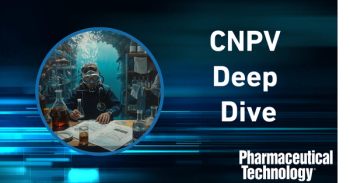
Clariant Launches Amide/Amine-Free Anti-Static Concentrate for Cleanroom and API Films
Mevopur anti-stat is tested to new stringent regulations and maintains anti-static performance at low humidity levels.
Clariant, a supplier of specialty chemicals, has launched a new amide/amine-free anti-static masterbatch concentrate for polyethylene films used in pharmaceutical production. The new anti-stat, known under the grade name Mevopur Peam 176045, will be introduced at CPhI Worldwide, Oct. 24–26, 2017 at Messe Frankfurt.
“The introduction is timely due to the changes in industry standards which, by 2020, will limit the acceptability of many of the currently used films that contain amide- and amine-based anti-stats,” Stephen Duckworth, Clariant’s head of Global Segment Medical and Pharmaceutical, said in a
“Anti-static additives are routinely incorporated in the polyethylene cleanroom films that line containers and dispensers for APIs, and in the tubes used to transfer powdered and liquid API during drug production. They are important because the anti-static properties help to reduce the risk of dangerous conditions like explosions,” Duckworth explained.
The new additive masterbatch concentrate is part of Mevopur, the brand of controlled, consistent, and compliant products for plastics applications in the medical and pharmaceutical industries. According to Clariant, its new anti-static provides good static-dissipating performance and a competitive cost profile relative to alternatives. It has already been tested to the new United States Pharmacopeia (USP) pharmaceutical standard for pharmaceutical-contacting plastics, which are scheduled to come into force in 2020. For the first time, the new standard-USP<665>Plastic Components and Systems Used in the Manufacturing of Drug Products-will apply the same risk-based assessment of materials. Plastic components and single-use containers are increasingly used in manufacturing processes, particularly biological manufacturing processes. Despite their advantages, these plastic assemblies elicit concerns about chemical compounds that may leach or migrate into finished products and impact product quality or safety.
Anti-static films have, in the past, predominantly relied on “migrating” ethoxylated amine/amide-based anti-stats that had a degree of compliance to regulations for food contacting materials. Risk assessments that define migration limits of these additives cut allowable addition rates for amide- and amine-based additives to levels below of what is required for effective anti-static performance. This, in addition to the need to test at lower humidity levels (e.g., <25%), increasingly constrains these current technologies.
Duckworth highlighted that Clariant’s new Peam 176045 is fast-acting and long-lasting and amide/amine-free. “It performs even at the low relative-humidity levels common to pharmaceutical cleanrooms. And, compared to other alternatives, including permanent or non-migrating additives such as PEBA, it can be effectively used at a far lower concentration and cost.” He noted that Clariant’s Mevopur Peam 176045 has been tested to support compliance with the upcoming USP changes, and has none of the migration-limit concerns.
As part of the Mevopur product line, the Peam 176045 anti-stats are immediately available with declarations based on biological evaluation of raw materials per standards set by ISO, USP, and the European Pharmacopeia.
Clariant will also feature its high-purity polyethylene glycols (PEGs). These pharmaceutical polymers-known by the tradename Polyglykol-are highly water soluble with toxicological safety. They provide consistent performance in a wide range of applications, whether as excipients in suppositories, tablets, liquids or ointment bases, as actives in laxatives or for organ preservation, or as reaction compounds for drug-delivery systems. Experts from Clariant will be available at CPhI to discuss the benefits of its PEGs and the company’s range of Macrogols with various molecular weights.
Source:
Newsletter
Get the essential updates shaping the future of pharma manufacturing and compliance—subscribe today to Pharmaceutical Technology and never miss a breakthrough.




